
Packrafting: Paddling Remote Locations
12/13/2021 - by Luc Mehl
In this article, guest author and experienced backcountry paddler Luc Mehl offers insights into planning for remote whitewater adventures with a special emphasis on packrafting. Whether a hiker jumping into a packraft to get from Point A to Point B, or an experienced paddler wanting some backcountry tips, this article is excellent food for thought - and action.
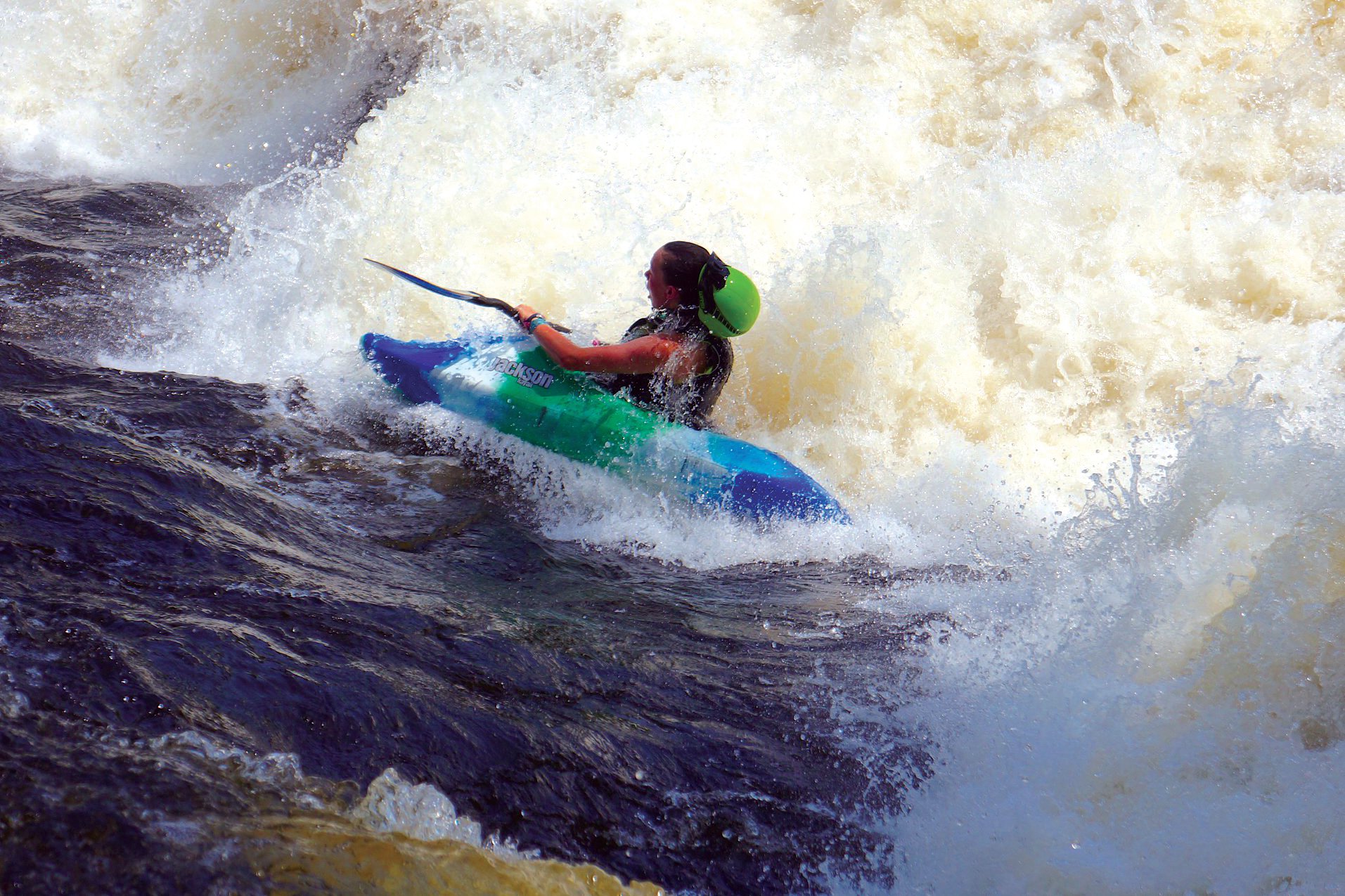
Thirteen River Rookie Mistakes to Avoid
09/16/2021 - by Teresa Gryder
Safety Editors Note. Teresa Gryder is a former river guide and a whitewater paddler with decades of experience. For the past few years, she's been writing and creating safety-focused events for the Lower Columbia Canoe Club. Her work is so impressive that I invited her to share her ideas in a regular column for the American Whitewater Journal. Welcome, Teresa; AW readers, enjoy. You are in for a treat!
-Charlie Walbridge, AW Safety Editor
When you’re good at something you can look at a new participant and know if they have a clue—or not. When you ARE that new participant, especially in whitewater boating, you need all the help you can get. So to keep your rookie status out of the spotlight, here’s a list. Everybody makes these mistakes sometimes, but guard against them. Mistakes don’t make you a bad person. They just mean you should slow down and get more systematic about your approach.
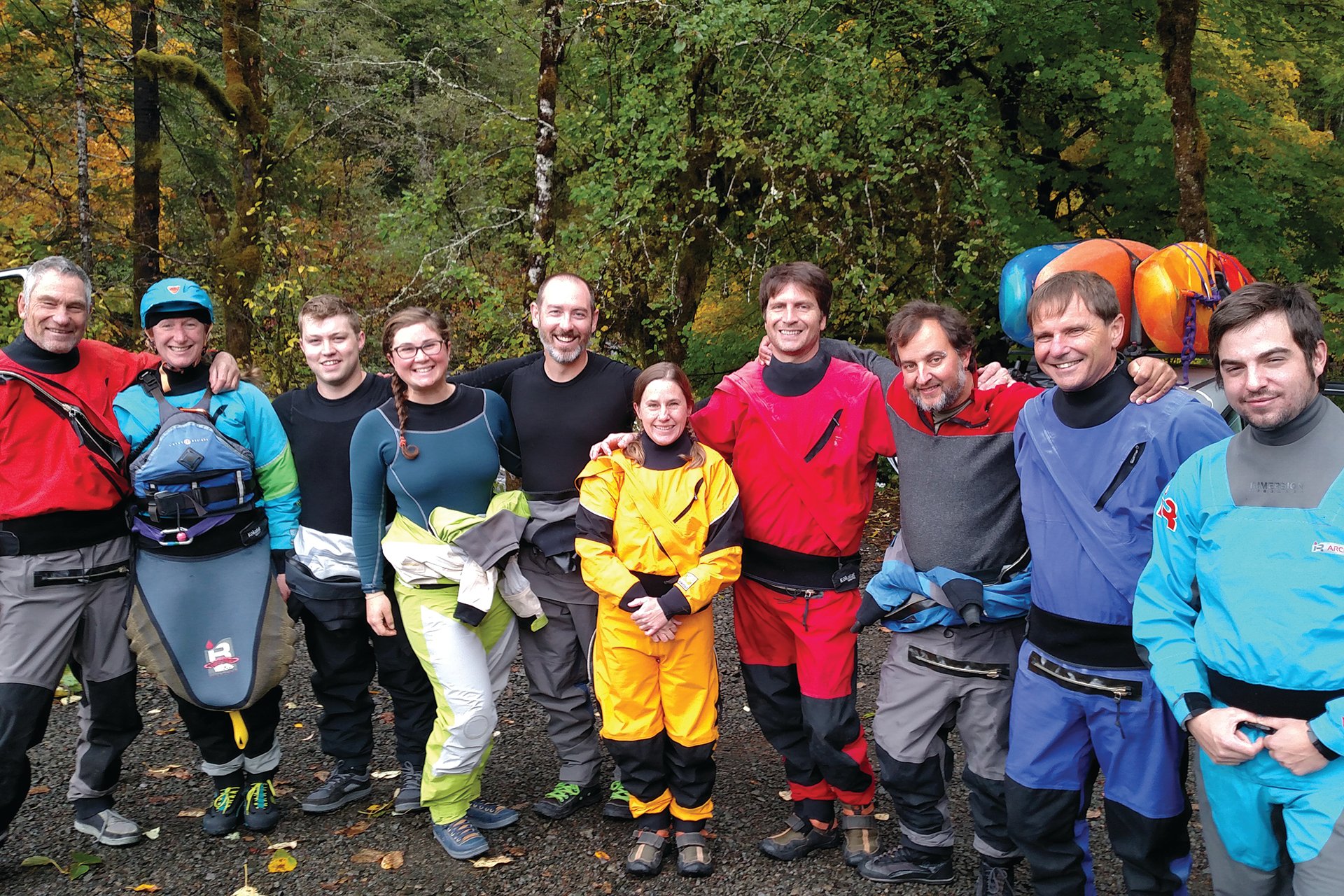
Safety Talk – The Human Factor
09/16/2021 - by Teresa Gryder
Safety Editors Note. Teresa Gryder is a former river guide and a whitewater paddler with decades of experience. For the past few years, she's been writing and creating safety-focused events for the Lower Columbia Canoe Club. Her work is so impressive that I invited her to share her ideas in a regular column for the American Whitewater Journal. Welcome, Teresa; AW readers, enjoy. You are in for a treat!
-Charlie Walbridge, AW Safety Editor
This column is about river safety. The topic that has captured my interest lately is how we make decisions. Humans are more intuitive and less rational than we like to admit. We make default “decisions” all the time without even knowing it.
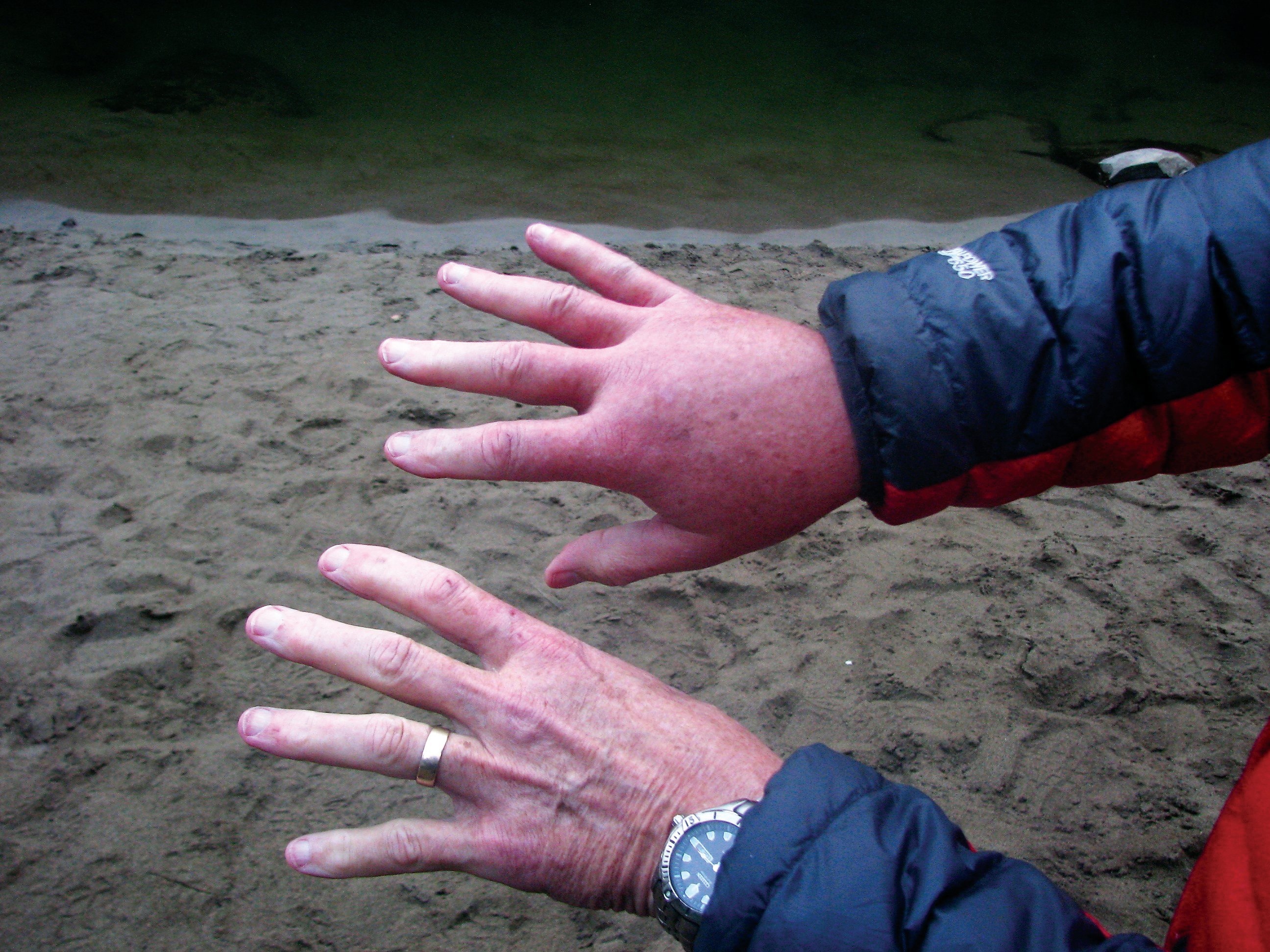
SELF SUPPORT SAFTEY
08/26/2021 - by Teresa Gryder
For part one of this series I wrote about paddling, rolling and portaging a loaded self-support kayak. Part two covered the basic gear you might use and why. In this part (three) we will consider some of the variables that contribute to safety and survival during a multi-day trip in a wilderness river environment.
The unexpected, the unfortunate, the unimaginable—it happens. We all know it and yet our powers of denial are impressive. We tell each other to “be safe” when we know our world is not safe, and our hobbies aren’t either. When things go wrong we tell one another, “It will be all right,” when really, we have no idea.
In the context of wilderness paddling, it’s valuable to acknowledge that Mother Nature is dynamic and often more powerful than we can comprehend. For us to survive on wild rivers we must be realistic about our situation and resources, and make reasonable decisions. There are no guarantees, but by being conscious and conservative we can adjust the odds in our favor. One of the most important purposes of this article is to emphasize that the risk calculation for a multi-day wilderness trip is different than for a roadside day trip.
For the most part whitewater accidents happen because of familiar hazards and mistakes. Some common denominators are cold water, fast-rising water, inadequate clothing, failing to wear pfds, continuous whitewater, and strainers in the river. These challenges injure and kill whitewater paddlers every year. If you are considering self-support kayaking, I hope that you are well versed in how to minimize the known risks.

Midnight Miracle at Kanawha Falls
11/09/2020 - by Charlie Walbridge
A Tennessee kayaker was rescued after spending 8 hours trapped behind the veil of Kanawha Falls, a 15 foot drop located below the confluence of the New and Gauley Rivers in West Virginia. The victim was paddling alone; a fisherman spotted his loose kayak and notified authorities. Top expert kayakers from Fayetteville, WV teamed up with WV-DNR officers and first responders to locate and rescue the man. Read their remarkable first-person accounts in the American Whitewater Accident Database: https://www.americanwhitewater.org/content/Accident/detail/accidentid/112642

Useful Links to Low-Head Dam Safety Issues
10/19/2020 - by Charlie Walbridge
A discussion of low head dam hydrology, and what features make a dam dangerous, and how to mitigate them.
https://www.youtube.com/watch?v=XsYgODmmiAM
A list of low-head dam related fatalities nationwide:
http://krcproject.groups.et.byu.net/browse.php
A list of dam-related fatalities in Iowa going back over 100 years. Iowa has done a remarkable job removing or modifying low head dams.
http://www.iowawhitewater.org/lhd/fatalities.html
The original video on dam safety: The Drowning Machine
https://www.youtube.com/watch?v=E3ZRL2d5FtU

Kayakers assist the WV-DNR on a Recovery
04/14/2020 - by Charlie Walbridge
On February 9th, 2020 kayaker Jamie Gray was killed on the Middle Fork of the Tygart river in West Virginia. The next day the state DNR closed the river while they searched a large undercut rock where she was last seen. When that effort was unsuccessful, DNR officer Chris Evans coordinated with local kayakers to do a thorough downstream search. They found her body on the Main Tygart a mile downstream, just above S-Turn Rapid. A full description of the search and the recovery can be found in the American Whitewater Accident Database: https://www.americanwhitewater.org/content/Accident/detail/accidentid/76310
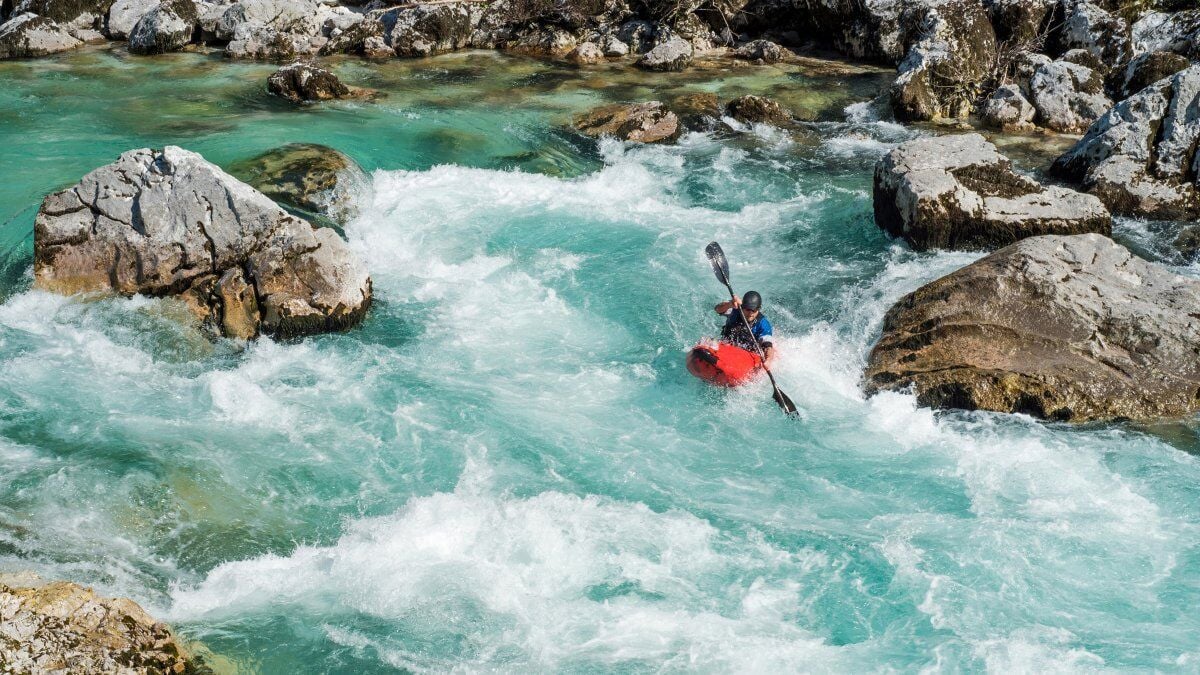
Good Article on Flush Drowning from Outside Magazine
04/14/2020 - by Charlie Walbridge
An interesting article in Outside Magazine, based on a research paper done with information stored in the American Whitewater Accident Database. Certainly cold water plays a big role in a flush drowning death, especially when the swimmer has inadequate thermal protection. In addition to cold water shock, a few drops of cold water down the throat can cause laringospasm, which narrows the trachea and can make breathing very difficult. But in my opinion, the relentless, fast moving character of Western rivers is the main reason that flush drownings are more common there. With the exception of the Cheoah and flood-stage runs, few Southeastern rivers can compare to an average Western Class IV. Here's the link: https://www.outsideonline.com/2411473/flush-drowning-whitewater-deaths-study?fbclid=IwAR2-blIEjgNu7tFBgXxT4ozlyfNw0Yc6yt41pao9daWRdmGvloxpqyb3ovQ

Community Voices: Respect the River, River Surfers Should Wear PFDs
07/09/2019 - by Brittany Parker
I can't keep my mouth shut any longer. I've been troubled the past couple weeks with the direction river surfing is going. I've been wrestling with bringing it up because I'm afraid of alienating myself and getting crucified online by the river surfing community. But this isn't about me, this is about the future of our sport and the lives of others.
I don't like surfing in the river alone. And lately, even with a 15 person deep line up at the wave I feel alone. I feel alone because I am one of maybe two or three there wearing a PFD, or sometimes the only one. I feel alone because if something were to happen, like getting knocked unconscious or my body cramping up, I don't have faith that the people in the line up could save me.

Tow Tether Danger Highlighted by Recent Accident
02/25/2019 - by Charlie Walbridge
Nancy Kell, a very experienced Mid-States kayaker, died on February 24th after flipping in a Class II rapid on West Virginia's Red Creek. There were a number of strainers in the vicinity above and below the water. One of them snagged her tow tether, pulled her out of her boat, and held her under water. She was with a very experienced crew but they could not reach her quickly enough. Equipment snags are a real risk. In the light of this accident I strongly urge anyone using a cowtail, pigtail, or tow tether to recheck your setup, and to consider whether wearing a tow tether makes sense. Be certain that your tether releases cleanly at both ends. Do not attach the front carabiner to a non-releasable point, like a pocket or strap. Ms. Kell did this, and it may have been a contributing factor. Apparently many current rescue PFD designs to not feature a front release point! Do not attach a tether to the rear of your PFD with a non-locking carabiner, as that may inadvertently clip into a rope. The tether should fit very snugly, without sagging, but as the photo shows Ms. Kell did that, and it did not protect her! The harness release should be quick and foolproof. Practice harness releases under pressure before using it on the river. Finally, remember that any additional strap is a potential snag hazard. Ask yourself if the usefulness of a tow tether is worth the risk, especially on small, strainer infrested creeks. Carry it in a PFD pocket or dry bag if necessary. Click for a link to the report in the AW Accident Database. (Jeff Macklin Photo)

American Whitewater Announces Endowment
07/30/2018 - by Mark Singleton
American Whitewater is pleased to announce the creation of an endowment to promote safety education and outreach. The endowment will support "promoting whitewater safety, responsible on-river behavior, safety education and outreach, and maintenance of the American Whitewater Safety Code and Whitewater Accident Database.' Anyone wishing to add to the fund can simply make a donation to American Whitewater here and include safety education in the comment field of the donation.
Useful Whitewater Rescue Videos
01/14/2018 - by Charlie Duffy
I teach a fair number or ACA Safety & Rescue classes each year. I’ve also lead numerous Instructor Certification Workshops. The ACA Level 4 Curriculum covers many topics. Some students/candidates are interested in real world examples where these skills come into play. I was quite fortunate to have Charlie Walbridge lead my Instructor Certification Class. One of the many interesting exercises was a slide show of various incidents we analyzed and took a stab at “what would we do?”. With the proliferation of Go Pro video cameras, I decided to make a collection of successful rescues that I share as exercises for Instructor Debriefing exercises.
Everyone should be very thankful to those paddlers that reported these incidents to the AW Safety Database (https://www.americanwhitewater.org/content/Accident/view/) and shared their lessons learned so we can all benefit. Everyone lets their guard down sooner or later – talented paddlers practice defense in depth and can manage these incidents.
Swiftwater Swimming Skills & Avoiding Flush Drowning
o https://www.americanwhitewater.org/content/Accident/detail/accidentid/3301/
o One of the best examples of conserving energy in big water
· https://www.youtube.com/watch?v=gAtAFYkjVmw
o I can’t find an entry in the AW Safety Database
o NRS Instructional film, great rescue communication skills
· https://www.americanwhitewater.org/content/Accident/detail/accidentid/3214/
o No video but a great instructional report on flush drowning, non-tethered rescue, and the need to maintain First Aid training
Four Corners (Scene Management), Plan A, B, C, …
o https://www.americanwhitewater.org/content/Accident/detail/accidentid/3724/
o https://boatertalk.com/forum/BoaterTalk/1052440674
o http://www.mountainbuzz.com/forums/members/1679-albums1324-picture6247.jpg
o Not all rescue solutions are obvious. This is why we box (enclose) the rescue site, so someone is in place when Plan A doesn’t work. Also gives a great example on why bulk heads in kayaks have been redesigned.
Low Head Dams
o No entry in the AW Safety Database (it’s foreign).
o Shows how difficult it is to escape this feature and challenges in rescues.
· https://www.youtube.com/watch?v=3g6n0O7T13o
o https://www.americanwhitewater.org/content/Accident/detail/accidentid/4034/
o Better example of recirculation, note how small the drop is.
· https://www.youtube.com/watch?v=qW65pWAjDgo
o I can’t find an entry in the AW Safety Database (it’s old, 1975)
o Shows the hazards to rescue professionals dealing with low head dam rescues.
· https://www.youtube.com/watch?v=z3Sc27E6ZCU
o Nice video showing a wide variety of professional rescue techniques
Bad Hydraulic
· https://www.youtube.com/watch?v=Rl-LjPG7ltc
o https://www.youtube.com/watch?v=aDDgOnDuDAE
o No entry in the AW Safety Database (February 2015)
o This is a great training video, lots of challenges. It’s really special since you have videos from both the rescuer and the person needing assistance.
Reach Rescue
· https://www.facebook.com/failarmy/videos/1252419981521828/
o Unknown if in the AW Safety Database (January 2017)
o Fast, simple, effective and no ropes. Great example of RETHROG.
Hypothermia
· https://www.youtube.com/watch?v=Wz3gy5XyaBo
o This is such a great training resource (not an incident)
· https://www.soundingsonline.com/voices/hypothermia
o This is such a great training resource (not an incident)
Tethered Rescues
· https://www.youtube.com/watch?v=_o43JnQknus&feature=youtu.be
o Not in the AW Safety Database.
o The Green River Race has the most incredible safety crew imaginable. Lots of great examples of tethered rescues at Gorilla including the most famous clip at the 3 minute point.
Sieve & Stabilization Line Rescue
· https://www.instagram.com/p/BaR1ouwA8ks/
o https://www.facebook.com/african.river.rat/videos/1256292557850175/
o https://www.americanwhitewater.org/content/Accident/detail/accidentid/22248/
o https://thinkrain.blogspot.com/2006/09/initiation.html?m=1
o Many pins have taken place at this spot and the hazard is well documented. This is a great example in the use of a stabilization line.
Strainers
· https://www.adn.com/outdoors-adventure/2017/08/15/daring-rescue-on-six-mile-creek-caught-on-video/
o https://www.americanwhitewater.org/content/Accident/detail/accidentid/14298/
· https://www.youtube.com/watch?v=DvzumGifKPA&t=170s
o Couldn’t find an AW Safety Database entry.
o Well narrated. Tethered rescue, hands on is key!
Solo Paddling·
o https://www.americanwhitewater.org/content/Accident/detail/accidentid/4096/
o Paddling solo is one of the most common contributing factors to all reported incidents in the AW Safety Database.
Throw Rope Skills
o AW safety database entry unknown.
o Few films show very clearly why we need to practice our throw rope skills.
Undercut Rescue
o No AW Safety Database entry, this was during a race on Daddy’s Creek.
· https://www.youtube.com/watch?v=D0xgRKB3Vu4&t=19s
o No AW Safety Database Entry (Foreign)
o Very close call
Hands On, Near Drowning, Situational Awareness, Equipment Trap
· https://www.youtube.com/watch?v=DvzumGifKPA&t=170s
o https://www.americanwhitewater.org/content/Accident/detail/accidentid/4396/
o Excellent rescue with a lot of challenges.
Raft Unpinning
· https://www.youtube.com/watch?v=6nIAmxDinzU
o Very challenging place to unpin a raft, worse yet – a bucket boat.
Scouting!
· https://www.facebook.com/lance.beaber/videos/191139297696956/
o No AW Safety Database report.
o Many paddlers these days choose not to scout when necessary. Yes it’s inconvenient but in a few cases may save your life as well as your friends.
40 years of Accident Databass Statistics
04/03/2017 - by Charlie Walbridge
|
American Whitewater Accident Database Statistics: 1975 - 2016
|
|||
|
Total Records |
1588 |
||
|
Fatalities |
1262 |
||
|
Near Misses |
268 |
||
|
Injuries |
58 |
||
|
|
|
||
|
United States |
1192 |
||
|
Canada |
30 |
||
|
All Other |
40 |
||
|
|
|
||
|
Fatalities by Boat Type |
|||
|
Kayak |
446 |
||
|
Canoe |
183 |
||
|
Raft and IK |
486 |
||
|
Other |
146 |
||
|
Commercial |
231 |
||
|
Private |
1030 |
||
|
|
|
||
|
Fatalities by Cause |
|||
|
Cold Water |
326 |
||
|
Flush Drowning |
310 |
||
|
High Water |
290 |
||
|
No PFD |
201 |
||
|
Strainer |
196 |
||
|
Entrapment |
175 |
||
|
One Boat Trip |
166 |
||
|
Undercuts/ Sieves |
159 |
||
|
Near Drown (Nonfatal) |
147 |
||
|
Dam Hydraulic |
116 |
||
|
Failed Rescue |
88 |
||
|
Caught in Nat. Hydraulic |
70 |
||
|
Equipment Trap |
63 |
||
|
Solo Paddler |
55 |
||
|
Head Injury |
52 |
||
|
Heart Attack |
48 |
||
|
Foot Entrapment |
45 |
||
|
Impact/ Trauma |
42 |
||
|
Health Problem |
53 |
||
|
Spinal Injury (nonfatal) |
26 |
||
|
Vertical Pin |
13 |
||
|
|
|
||
|
Fatalities by River Difficulty |
|||
|
Class I-II |
128 |
||
|
Class III |
280 |
||
|
Class IV |
200 |
||
|
Class V |
173 |
||
|
|
|
||
|
Fatalities by Decade |
|||
|
1977-1986 |
48 |
||
|
1987-1996 |
219 |
||
|
1997-2006 |
453 |
||
|
2007-2016 |
530 |
||
|
|
|
||
|
Fatalities By Water Level |
|||
|
Low |
94 |
||
|
Medium |
370 |
||
|
High |
420 |
||
|
Flood |
33 |
||
|
|
|
||
|
Ages |
|||
|
Under 18 |
300 |
||
|
18-34 |
413 |
||
|
35-65 |
485 |
||
|
over 65 |
69 |
||
|
|
|
||
|
Fatalities by State |
|||
|
Alabama |
16 |
||
|
Alaska |
26 |
||
|
Arizona |
21 |
||
|
Arkansas |
13 |
||
|
California |
109 |
||
|
Colorado |
155 |
||
|
Connecticut |
9 |
||
|
Georgia |
7 |
||
|
Hawaii |
1 |
||
|
Idaho |
74 |
||
|
Illinois |
10 |
||
|
Indiana |
11 |
||
|
Iowa |
3 |
||
|
Kansas |
7 |
||
|
Kentucky |
11 |
||
|
Maine |
14 |
||
|
Maryland |
14 |
||
|
Massachusetts |
7 |
||
|
Michigan |
14 |
||
|
Minnesota |
6 |
||
|
Missouri |
7 |
||
|
Montana |
50 |
||
|
Nevada |
2 |
||
|
New Hampshire |
14 |
||
|
New Jersey |
16 |
||
|
New Mexico |
10 |
||
|
New York |
52 |
||
|
North Carolina |
33 |
||
|
North Dakota |
2 |
||
|
Ohio |
16 |
||
|
Oklahoma |
3 |
||
|
Oregon |
60 |
||
|
Pennsylvania |
66 |
||
|
Rhode Island |
2 |
||
|
South Carolina |
29 |
||
|
Tennessee |
36 |
||
|
Texas |
22 |
||
|
Utah |
29 |
||
|
Vermont |
6 |
||
|
Virginia |
30 |
||
|
Washington |
69 |
||
|
West Virginia |
78 |
||
|
Wisconsin |
12 |
||
|
Wyoming |
20 |
||
|
|
|
||
|
|
|||
|
No Whitewater Fatalities were reported in Delaware, DC, Florida, Louisiana, Mississippi, Nebraska, & South Dakota
|
|||
|
Top 10 |
|||
|
1.Colorado |
155 |
||
|
2. California |
109 |
||
|
3. West Virginia |
78 |
||
|
4. Idaho |
74 |
||
|
5. Washington |
69 |
||
|
6. Pennsylvania |
66 |
||
|
7. Oregon |
60 |
||
|
8. Montana |
50 |
||
|
9. Tennessee |
36 |
||
|
10. North Carolina |
33 |
||
|
|
|
||
USCG Project Experts Launch National Human Propelled Boat Standards Survey
08/04/2013 - by Thomas O'Keefe
A team of experts assembled with U.S. Coast Guard grant funding seeks national content validation of a set of entry level, skill-based Human (manually propelled) boat operation standards. The collaborative development of sail, power and human propelled standards will eventually be recognized (not mandated) by the US Coast Guard for incorporation in recreational boating training programs nationwide. Recreational paddling and rowing enthusiasts and especially those with experience in On-Water teaching or training are urged to participate in an on-line survey.
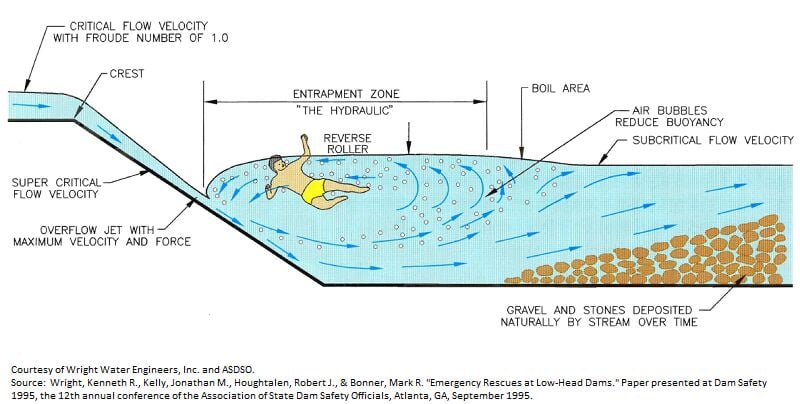
AW Partners with Dam Safety Researcher
06/12/2013 - by Charlie Walbridge
American Whitewater's Accident Database contains more than 1000 fatal accidents and near misses reported over the last 35 years. We sometimes give qualified water safety researchers access to this material. Our latest research partner is Ed Kern, a Masters Degree candidate in civil engineering at Brigham Young University in Utah. Click through for more information and a link to his web site.
Western North Carolina River Rescue Rodeo - Sept 29th, 2013
04/29/2013 - by Mark Singleton
Teams of canoes and decked boats will compete in river rescue events on the Tuckasegee River in Dillsboro, NC.
Life and Death Beyond the Edge
01/09/2013 - by Adam Herzog
An article by Adam Herzog discusses risk taking, death, and other issues for Class V kayakers. First Published in Site Zed, a web site for thoughfrul essays about paddling sponsored by Immersion Research.
White Salmon River Homecoming Celebration (WA)
09/07/2012 - by Thomas O'Keefe
Removal of Condit Dam is nearing completion and we are getting ready to celebrate the moment on Saturday September 29th. Contractors still have equipment in and along the river that will be removed over the next couple weeks and a log jam resulting from the dam breach still needs to be addressed. It's important for paddlers to wait until this work is done and everyone considering this reach needs to understand the hazards associated with the class IV/V entrance drop into the Narrows.
Link to Article about Liability & Rescue
04/02/2012 - by Charlie Walbridge
